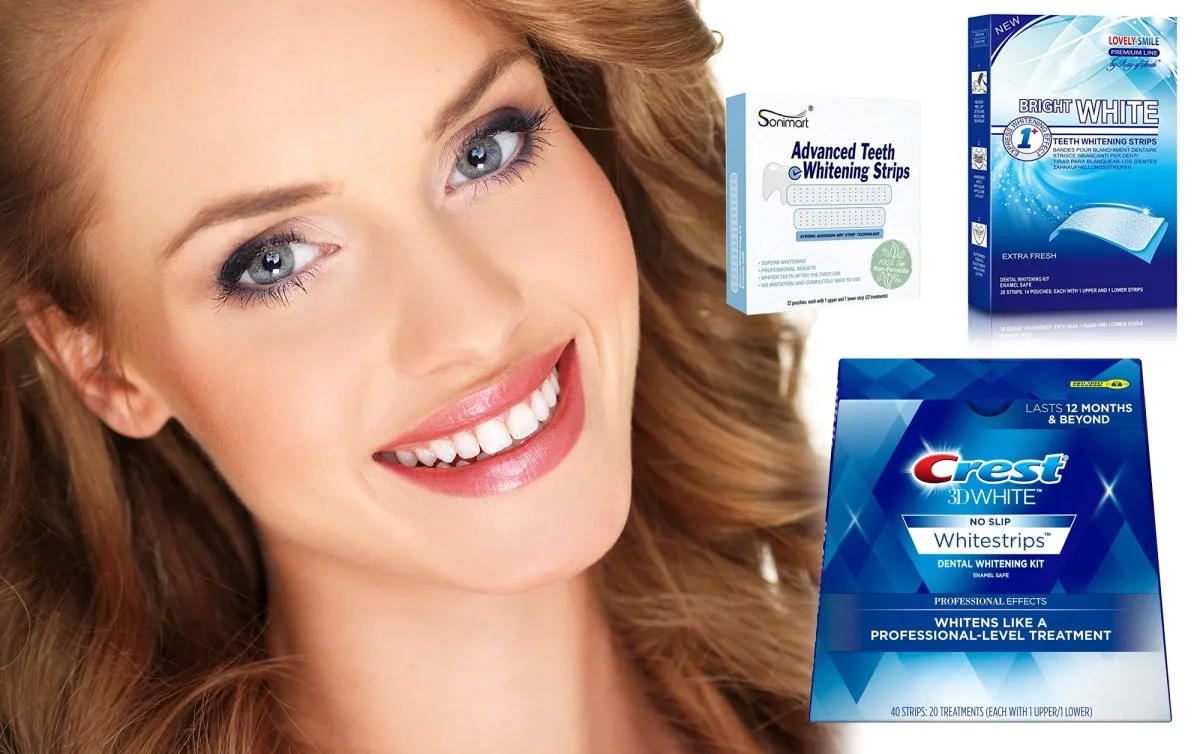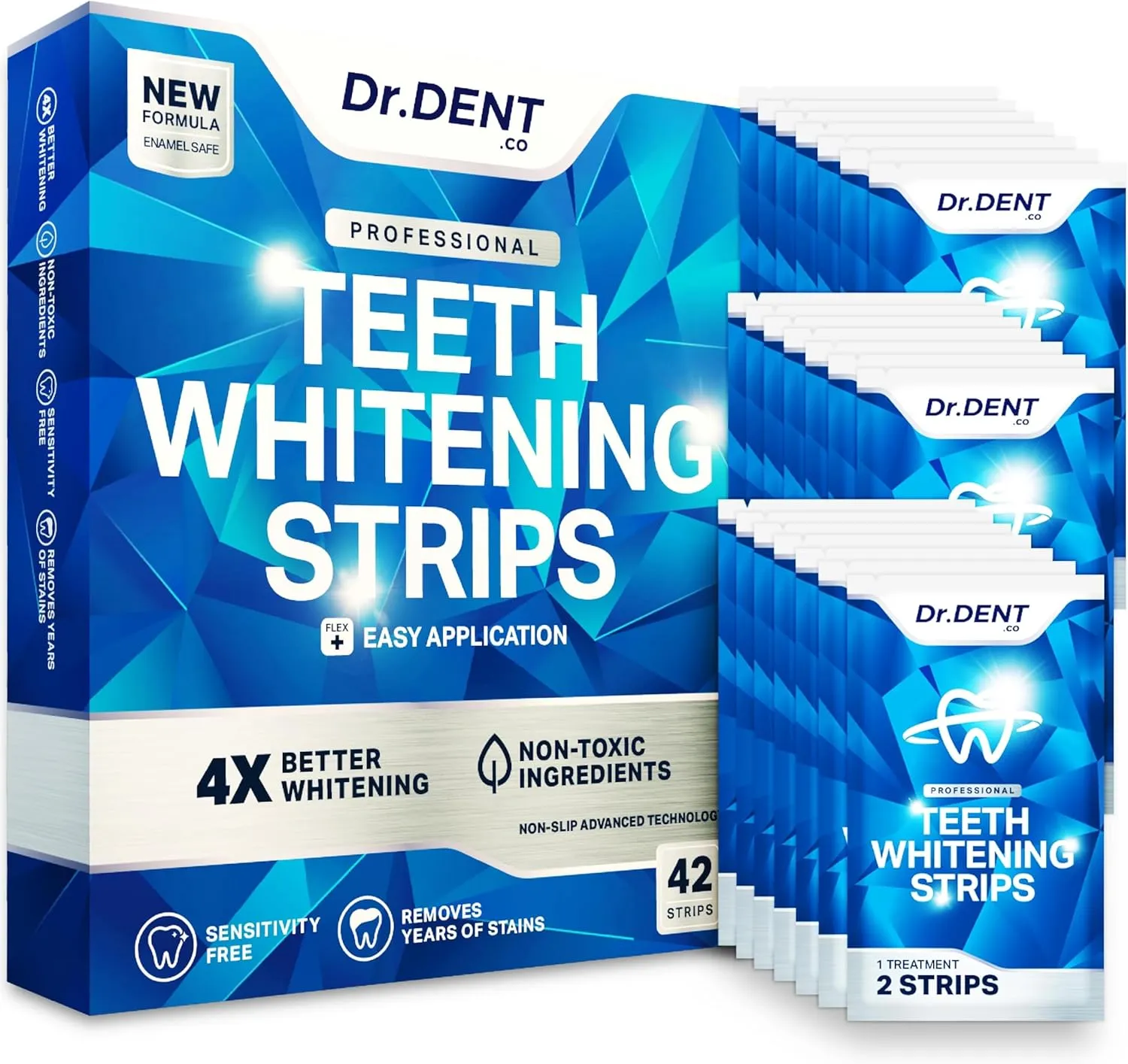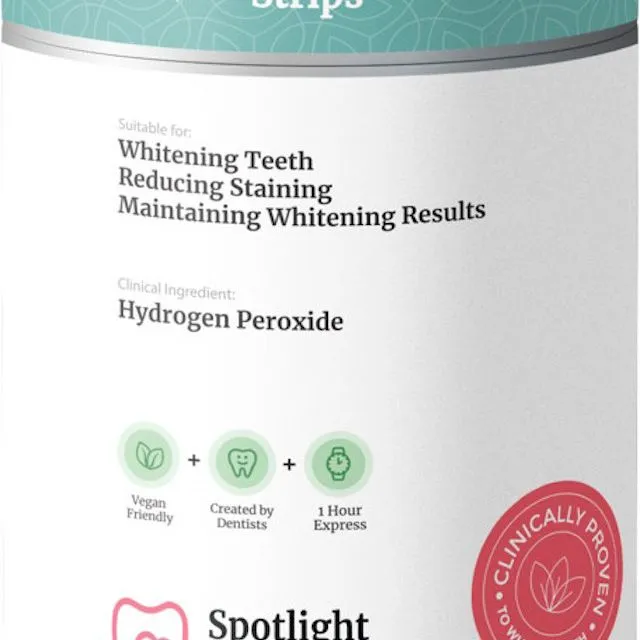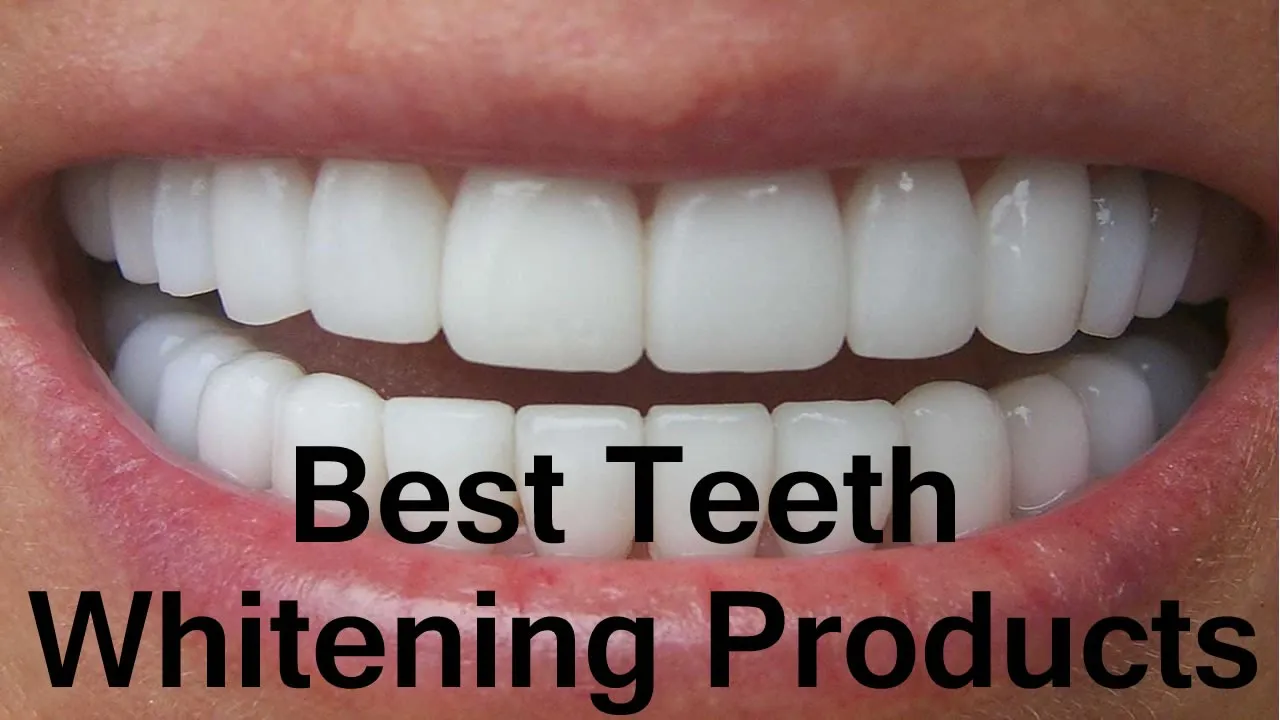What Are Teeth Whitening Strips
Teeth whitening strips are a popular and convenient way to brighten your smile. These thin, flexible strips are coated with a whitening agent, typically a form of peroxide, that adheres directly to your teeth. They are designed to be easy to use at home, offering a cost-effective alternative to professional teeth whitening treatments. The appeal lies in their simplicity and the noticeable results that many users experience. These strips have gained widespread recognition for their effectiveness in removing surface stains and providing a brighter, more confident smile.
How Do Teeth Whitening Strips Work
The science behind teeth whitening strips is relatively straightforward. The active ingredient, usually hydrogen peroxide or carbamide peroxide, penetrates the enamel of your teeth. These chemicals break down the stain molecules that cause discoloration. Over time, as the whitening agent comes into contact with these molecules, it oxidizes them, which essentially breaks them apart. This process makes the stains less concentrated, leading to a lighter and whiter appearance of your teeth. The effectiveness depends on the concentration of the active ingredient, the duration of use, and the frequency of application. Consistent use, as directed by the product instructions, is key to achieving the desired results.
Key Ingredients to Look For

When choosing teeth whitening strips, understanding the active ingredients is crucial. The two primary agents to look for are hydrogen peroxide and carbamide peroxide. These are the compounds responsible for the whitening action, and their concentration levels often dictate the effectiveness and speed of the whitening process. Other ingredients play supportive roles, such as those that help the strips adhere to your teeth and improve the overall user experience. Consider products with enamel-strengthening additives to minimize potential sensitivity.
Hydrogen Peroxide
Hydrogen peroxide is a potent oxidizing agent commonly used in teeth whitening products. It directly penetrates the enamel, breaking down stain molecules. The concentration of hydrogen peroxide significantly impacts the whitening results. Higher concentrations typically lead to faster and more noticeable results, but they may also increase the likelihood of sensitivity. Strips containing hydrogen peroxide are often preferred for their proven efficacy, but it is essential to follow the instructions carefully to minimize any adverse effects. Many popular teeth whitening strip brands utilize hydrogen peroxide at varying concentrations.
Carbamide Peroxide
Carbamide peroxide is another common whitening agent. It breaks down into hydrogen peroxide, delivering similar whitening effects. Carbamide peroxide is often found in higher concentrations and releases hydrogen peroxide over a longer period, which might reduce sensitivity for some users. While it may take slightly longer to achieve the same results as hydrogen peroxide, it can be gentler on your teeth and gums. The choice between hydrogen and carbamide peroxide depends on your sensitivity level and desired whitening speed. Always read the product details to determine the correct usage.
What to Consider When Choosing Strips

Selecting the right teeth whitening strips involves several considerations to ensure you get the best results safely. First, check the concentration of the active whitening agent. Higher concentrations often yield quicker results, but they might also increase the risk of sensitivity. Second, consider your existing dental health. If you have sensitive teeth or gum issues, look for strips specifically designed for sensitive teeth. Third, evaluate the strip’s adhesion and comfort. Strips that fit well and adhere properly to your teeth will deliver better whitening results. Also, always read reviews to understand other users’ experiences.
Sensitivity and Side Effects
Teeth whitening, including the use of strips, can sometimes lead to sensitivity or other side effects. The most common side effect is tooth sensitivity, which typically subsides shortly after you finish the whitening treatment. Some individuals may experience gum irritation. To mitigate these risks, choose strips designed for sensitive teeth or those with lower concentrations of the active ingredient. Also, follow the product instructions carefully and avoid overuse. Consulting with your dentist before starting any teeth whitening treatment is always a good idea, especially if you have any existing dental conditions.
Strip Adhesion and Comfort
The fit and comfort of teeth whitening strips significantly impact their effectiveness and your overall experience. Well-fitting strips adhere to your teeth properly, ensuring the whitening agent comes into contact with the entire surface. Poorly fitting strips may slip or not cover all the teeth, resulting in uneven whitening. Look for strips that are flexible and conform to the shape of your teeth. Additionally, consider the taste and texture of the strips, as they can influence your comfort during the application period. Read reviews that mention comfort and adhesion before making a purchase.
Top 5 Best Teeth Whitening Strips

Based on user reviews, effectiveness, and overall value, the following are considered some of the best teeth whitening strips available:
Brand 1
Brand 1 is known for its effective whitening power and ease of use. These strips often include a high concentration of hydrogen peroxide, delivering noticeable results quickly. The strips generally fit well, ensuring good contact with the teeth surfaces. Many users find them comfortable, and the brand usually offers a money-back guarantee. Brand 1 is often praised for its ability to remove tough stains. The design is simple and the package includes clear instructions to ensure successful results.
Pros
- Fast results
- Easy to use
- Good adhesion
Cons
- May cause sensitivity
- Can be more expensive
Brand 2
Brand 2 is another popular choice, recognized for its gentle formula that is suitable for sensitive teeth. These strips often use carbamide peroxide, releasing the whitening agent over time. They typically provide effective whitening while minimizing sensitivity. Brand 2 is designed to fit comfortably, with a flexible design that conforms to the shape of your teeth. Many users commend its gentle yet effective whitening action, making it a great option for those with sensitivity concerns.
Pros
- Gentle on teeth
- Effective for sensitive teeth
- Comfortable fit
Cons
- Slower results
- May require more frequent use
Brand 3

Brand 3 offers a unique approach with its innovative strip design, frequently focusing on improved adhesion. These strips often feature advanced technologies like thin layers that provide better contact with the tooth surface. This design helps to maximize whitening while reducing the potential for uneven results. The product may include flavors that add to a pleasant experience. Brand 3 provides effective whitening with innovative features making it a great option.
Pros
- Innovative design
- Excellent adhesion
- Even whitening
Cons
- Might be less readily available
- Cost can be higher
Brand 4
Brand 4 is often recommended due to its strong stain-removing abilities. These strips typically include high concentrations of hydrogen peroxide, which is designed to tackle stubborn stains from coffee, tea, or other sources. The effectiveness is a significant draw. Users appreciate the product’s capacity to deliver significant results quickly. The brand often has clear instructions. Brand 4 remains a go-to choice for tackling difficult stains.
Pros
- Removes tough stains
- Fast acting
- Noticeable results
Cons
- May increase sensitivity
- Could cause gum irritation
Brand 5
Brand 5 strips often come with additional features, such as enamel-strengthening ingredients. This added benefit can help protect the enamel while whitening teeth. The formula may include ingredients that aim to make the whitening process more effective. The brand emphasizes a holistic approach to teeth whitening, which makes this product a popular choice. Brand 5 provides excellent whitening capabilities and promotes dental health.
Pros
- Protects enamel
- Comprehensive whitening
- Additional dental benefits
Cons
- May take longer to show results
- Can be less accessible
How to Use Teeth Whitening Strips Effectively

Using teeth whitening strips effectively involves several steps to ensure safety and achieve the best results. The first step is preparing your teeth. Always brush your teeth gently before applying the strips to remove any surface debris, but avoid brushing immediately before. After brushing, dry your teeth to ensure the strips adhere properly. Following the application instructions, position the strips and press them onto your teeth. Ensure the strips cover the tooth surfaces. Leave the strips on for the recommended time, typically 30 minutes. After removal, rinse your mouth to remove any remaining gel.
Preparing Your Teeth
Proper preparation is crucial before applying teeth whitening strips. Begin by brushing your teeth thoroughly to remove food particles and plaque. However, avoid brushing immediately before applying the strips because it can increase sensitivity. After brushing, floss to ensure your teeth are clear of debris. Then, gently dry your teeth with a clean tissue or cloth. A dry surface helps the strips adhere to your teeth effectively and ensures the whitening agents stay in contact with the tooth surface.
Applying the Strips
Application of the strips is straightforward, though careful execution is crucial. After preparing your teeth, peel the strips carefully from their backing. Apply the longer strip to your upper teeth and the shorter one to the lower teeth. Align the strips with your gum line, pressing gently to ensure good contact with your teeth. Fold any excess strip material behind the teeth to keep the strip secure. Make sure that the strips cover the front surfaces of the teeth. Avoid touching your gums to prevent irritation.
Aftercare and Maintenance

Proper aftercare helps to maximize results and protect your teeth. Once you remove the strips, rinse your mouth with water to remove any residual gel. Avoid eating or drinking dark-colored foods or beverages for at least an hour after each treatment to prevent staining. It is recommended to avoid smoking during the treatment period as smoking can impede the whitening process. Continue to practice good oral hygiene, including brushing and flossing regularly, to maintain your brighter smile. Consult your dentist regarding the specific needs of your dental health.
Alternatives to Teeth Whitening Strips
While teeth whitening strips are a convenient option, other methods may be more suitable for certain individuals. Understanding the various alternatives helps you select the best approach. Professional whitening, performed by a dentist, provides immediate and dramatic results, but it may be more expensive. Whitening toothpastes and rinses offer a gentler approach to remove surface stains. The choice among these methods depends on your specific needs, the severity of discoloration, and your budget. The ultimate goal is to achieve a brighter and healthier smile while ensuring your oral health.
Professional Whitening
Professional teeth whitening, also known as in-office whitening, is a treatment administered by a dentist. This method typically involves a higher concentration of whitening agents than at-home products, which yields faster and more dramatic results. The dentist will apply a protective gel to your gums and then apply a whitening solution to your teeth. A special light or laser may be used to accelerate the whitening process. Professional whitening is ideal for those seeking immediate results or those with severe discoloration. The process is safe, and it is overseen by a professional to manage any potential side effects.
Whitening Toothpastes and Rinses
Whitening toothpastes and rinses provide a less aggressive option for maintaining a brighter smile. These products typically contain mild abrasives or chemicals that help to remove surface stains. Whitening toothpastes are used during brushing, while whitening rinses are used after brushing to provide an extra layer of cleaning. While these products are not as effective as professional whitening or teeth whitening strips, they can still help keep your teeth bright. They are suitable for everyday use and can be incorporated into your regular oral hygiene routine. Always follow the instructions on the product packaging to avoid overuse.
Maintaining Your White Smile
Once you achieve your desired level of whiteness, maintaining your results is essential. Avoid or limit the consumption of staining foods and beverages, such as coffee, tea, red wine, and dark-colored berries. Practice excellent oral hygiene, including brushing twice daily and flossing regularly. Consider using a whitening toothpaste to help maintain the brightness. Periodic touch-up treatments with teeth whitening strips or other methods may be needed to sustain your bright smile. Regular dental checkups can ensure that your teeth remain healthy and bright.
